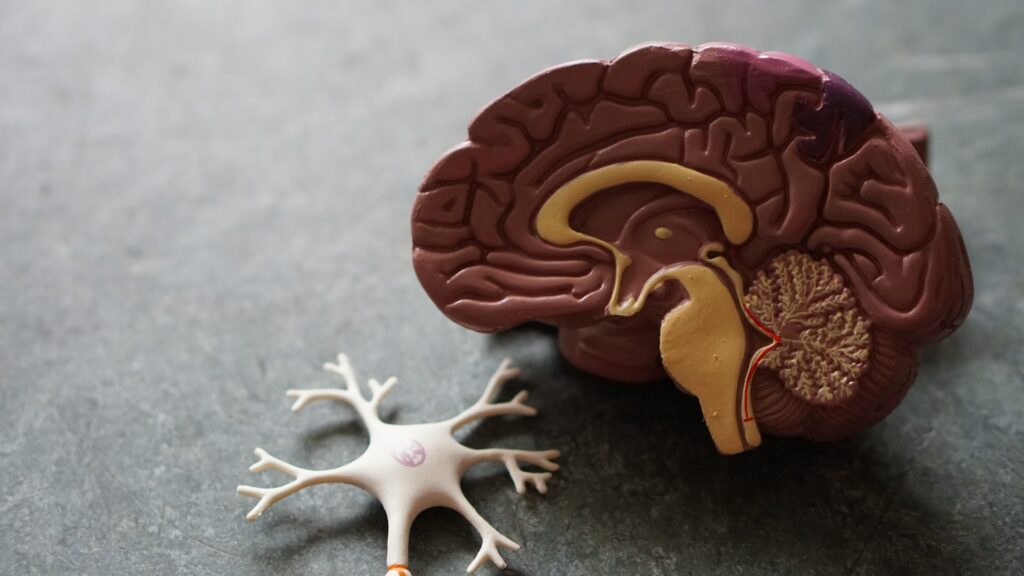Different Types of Pain Relief Explained
There are plenty of different pain relief medications out there that it can become very confusing, very fast. Looking for a simple pain relief medication for your knee or back can turn into a laundry list of different types, brands and medicines. The list below will help you decide which medication is best for the location of your pain.
Back Pain Relief
Depending on the type of back pain, it will usually improve within a few weeks to months. There are several different ways you can try and help reduce the pain in the meantime. Depending on the severity, back pain relief may come in forms other than medication, such as physiotherapy.
To begin, back pain can be relieved with painkillers called non-steroidal anti-inflammatory drugs (NSAIDs), such as ibuprofen. My Pharmacy currently stocks a large portion of different painkillers and NSAIDs, with many types available for purchase without a prescription.
If you can’t take NSAIDs for a medical reason or you’re allergic to the ingredients, alternative medicine such as codeine can be used, but this type is addictive and ideally should only be used for a few days. Others will find back pain relief in the form of hot and cold packs. Placing a hot water bottle or taking a hot bath can help ease the pain when back pain first starts. Applying cold to the area can also help. A pack of frozen vegetables can help short term, but ice should not be put directly onto the skin, as this can cause cold burn.

Period Pain Relief
Period pain is considered a natural and normal part of the menstrual cycle. Most women will experience it at some point their lives. The pain is a result of the muscular wall located in the womb tightening, causing contractions and muscle cramps.
In the majority of cases, period pain relief isn’t needed and is generally mild enough to be treated at home. Ibuprofen or aspirin is usually recommended for the management of period pain. If ordinary painkillers don’t provide enough period pain relief, a doctor may prescribe a stronger painkiller, such as naproxen.
There are certain self-care measures you can take to help further provide period pain relief alongside typical medications. This includes:
- Taking a warm bath or shower
- Massage the lower abdomen in a circular manner
- Use yoga as a relaxation technique to try and help distract you from the pain and discomfort
- If you smoke, try stopping smoking. Smoking is thought to increase the chance of experiencing period pain.
Sciatica Pain Relief
Sciatica is pain that radiates along the path of the sciatic nerve. This branches all the way down your lower back through to the hips and buttocks, and eventually to the bottom of each leg. It will typically only affect one side of your body and can get better in 4 to 6 weeks with proper rest and treatment.
Pain experienced during this can be extremely debilitating, so finding the correct Sciatica pain relief option is important for quality of life. If all at home self-care measures and adequate rest has been given, your doctor may prescribe medication to provide sciatica pain relief. Some of these types of drugs include:
- Anti-inflammatories
- Narcotics
- Muscle relaxants
- Anti-seizure medications
- Tricyclic antidepressants
In some cases, when sciatica pain relief medication is used and doesn’t provide enough relief, your doctor may recommended an injection of a corticosteroid into the affected area. Inflammation around the irritated nerve will be reduced, but the effects will usually wear off in a few months and they can’t be used as a permanent sciatica pain relief treatment as the risk of serious side effects increases when injections are used too frequently.

Immediate Gout Pain Relief
Gout is a type of arthritis that causes sudden and severe joint pain. The cause of gout is the build-up of uric acid in the blood. Uric acid is the by-product of the breakdown of something called a purine. Purines are naturally created by the body, but can also be acquired from your diet. Uric acid crystals are produced when purines are broken down. These small crystals then go and build up in the joints, ultimately causing gout and gout pain.
The most affected areas are usually the big toe, ankle, knee and patella. These joints are essential in getting about, thus making day to day life miserable with consistent pain.
If you’re looking for immediate gout pain relief, there are a few simple steps you can take to get the pain and swelling under control. First and foremost, take a rest from any intense physical activities such as sports. Alcohol should also be avoided, as drinking too much alcohol can trigger a gout attack.
Medications prescribed by your doctor can provide immediate gout pain relief. Ibuprofen is an anti-inflammatory agent and can stop acute attacks if they’re taken early. Likewise, another drug called colchicine, if taken in the first 24 hours, can immediately stop a gout attack in its tracks.
Pain Relief For Dogs
Before giving any medicated pain relief for dogs, if you’re thinking of using certain pain relief for dogs without your vet’s recommendation, don’t. Any pain relief given to your pet should have been prescribed by your vet. Never, under any circumstance, give your pet any medication without instructions from your vet, even if they have had it previously.
Your vet may recommended and prescribe a variety of different pain relief for dogs depending on where the pain is originating. NSAIDs for example can be just as useful for dogs as in humans. Helping reduce swelling, stiffness and joint pain all correlate between the two species.
These are some of the NSAIDs available just for dogs:
- Carprofen (Novox or Rimadyl)
- Deracoxib (Deramaxx)
- Firocoxib (Previcox)
- Meloxicam (Metacam)
NSAIDs are generally the only painkillers that your vet will recommend. Other painkillers will only be used if your dog requires more options. Some of these options may include gabapentin and tramadol.

Toothache Pain Relief
Toothache that lasts for more than 2 days should be cause for concern. If the pain continues to persist after 2 days, see a dentist.
A dentist will review your current pain problem and examine where the pain is located, ask how severe it is and what makes the pain worse. These examinations will help with deciding what course of action is needed. They will also likely do a physical examination, checking the mouth, teeth, gums, jaws, tongue, throat, sinuses, ears, nose and neck.
Your toothache pain relief will depend upon the finding during examination.
- If you are found to have a cavity, either the tooth will be removed or the cavity will be filled.
- Pain may be caused by an infection of the nerve, resulting for the need of a root canal.
- Swelling of the jaw can also be the culprit of toothache pain, a lodged piece of food can cause an infection.
The majority of toothache pain relief will be performed by your dentist and his/her team. If your toothache is not as severe, there are things you can do to temporarily relieve pain:
- Rinse your mouth with warm saltwater
- Rinse with hydrogen peroxide
- Apply a cold compress to any swelling
- Over the counter medications such as aspirin or ibuprofen.
Neck Pain Relief
Many people will inevitably experience neck pain during their lifetimes. The majority of the time it’s caused by poor posture or overuse. But other times, beck pain is caused by injury from a fall, or contact sports.
More often than not, neck pain will gradually get better over a couple of days. However, in some cases, neck pain can indicate a serious illness or injury that requires neck pain relief medication or treatment.
There are a lot of different studies and examinations you can undergo that can detect the cause of neck pain. Some of these tests include:
- X-rays
- CT scans
- MRI scans
- Lumbar puncture
- Electromyography
- Blood tests
Depending on the results of the above tests, your doctor will be able to recommend the best course of action to provide neck pain relief. Treatment for neck pain may include:
- Ice and heat therapy
- Physical therapy, including exercise and stretches
- Corticosteroid injections
- Muscle relaxants
- Neck collar/brace
- Antibiotics if an infection is present
- Surgery, although this is rarely necessary.
If neck pain doesn’t improve after resting for a couple of days, make an appointment with your doctor and discuss what neck pain relief treatment is viable for you.

Shoulder Pain Relief
As you age you’re more likely to experience shoulder pain from a list of common conditions. The pain can come on gradually or abruptly, and it may range from very mild pain to excruciating.
Shoulder pain relief can depend on what’s causing the pain the first place. Sometimes the cause of the pain isn’t even the shoulder itself, rather another part of the body is experiencing pain and is radiating to the shoulder. This can occur with certain neck problems, including disc herniation and arthritis.
One of the recommended shoulder pain relief medications is Voltarol Emugel. This gel helps with the relief of localized traumatic inflammation in the shoulder and other body locations. Voltarol contains an NSAID called diclofenac. Unlike heat patches and cooling gels, diclofenac is absorbed at the site of application. The gel penetrates the skin in order to provide shoulder pain relief.
If you are struggling to decide what to do about your shoulder pain, a pharmacist may be able to help and suggest shoulder pain relief medication or ideas. Some of these suggestions may include tablets, a cream or gel, heat and cold packs or recommending seeing a GP.
Stomach Pain Relief
Stomach pain is felt anywhere below your ribs all the way to your pelvis. Pain located in the stomach is also referred to as tummy pain or stomach ache. Stomach pain doesn’t necessarily mean your stomach is the source of the pain. The stomach houses many other organs including the liver, pancreas, small and large bowel, and reproductive organs.
Causes of serious abdominal pain include appendicitis and pregnancy problems. However, the majority of stomach pain is harmless and will eventually fade without medical intervention.
Stomach pain relief will depend on what’s causing the pain. Your doctor may recommend the following stomach pain relief treatments:
- Pain relief medication such as painkillers
- Fluids that are given into a vein to correct fluid loss and rest the bowel
- Medicines that will stop you from vomiting (excessive vomiting causes stomach pain due to the acidic nature of vomit)
- You may be asked to stop eating and drinking until the cause of the stomach pain is identified. You may have IBS and specific foods trigger it.

Muscle Pain Relief
Almost everyone will have experienced discomfort in their muscles at some point. Muscle tissue is located all over the body, so the likelihood of muscle pain or aches occurring is extremely high. Overusing or injury is generally the cause of muscle pain and discomfort, but there are other possible explanations for ongoing pain.
Tension, overuse, injury and skipping warmups all contribute to stress and tension, the ultimate causes for muscle pain and aches.
There are plenty of different muscle pain relief home remedies you can try at home, including a simple one; resting the area of the body you’re experiencing the pain and aches in. Gently stretching the muscles during rest and practicing stress relieving activities such as yoga can help relieve tension.
If pain continues to persist after multiple days of at home muscle pain relief activities, speak to your doctor. Although muscle pain and aches aren’t a cause for concern by itself, there may be an underlying cause.
Knee Pain Relief
Before contacting your doctor, consider trying these at home knee pain relief remedies –
- Put as little weight as possible on your knee. Avoid standing for a prolonged periods of time.
- Use a frozen pack of vegetables wrapped in a tea towel on the knee for up to 20 minutes every 2 to 3 hours.
- Take some over-the-counter paracetamol.
If pain continues to persist in your knee and doesn’t improve within a few weeks, see a GP. The knee locking, painfully clicking or giving way are also signs you need to see your GP. Your doctor may be able to provide knee pain relief in the form of prescribed medication or physiotherapy. If they suspect an injury, they may refer you to the hospital for a scan or specialist treatment.













